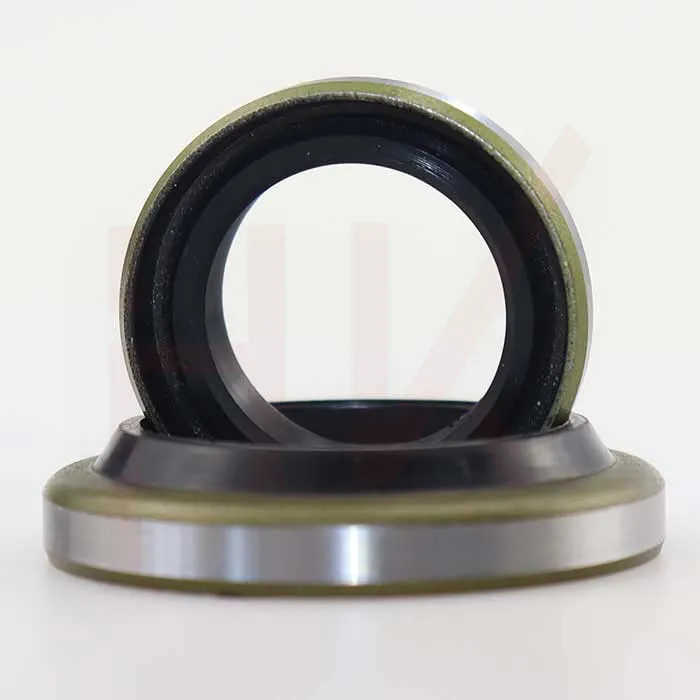Oct . 12, 2024 12:52 Back to list
metric wiper seals
Understanding Metric Wiper Seals Essential Components for Fluid Control Systems
Wiper seals, also known as scrapers, are crucial components in hydraulic and pneumatic systems. They serve the primary function of preventing contaminants from entering the internal parts of machinery, thereby extending the lifespan and operational efficiency of mechanical systems. In this article, we will explore the significance of metric wiper seals, their applications, and the factors to consider when selecting the right seal for specific applications.
What are Wiper Seals?
Wiper seals are designed to remove dirt, dust, and other contaminants from the surfaces of moving components. Typically installed at the outer edges of hydraulic cylinders or pneumatic actuators, these seals work in conjunction with other sealing elements like rod seals and piston seals. Their primary role is to maintain the cleanliness of the system, which is vital for preventing wear and tear, hydraulic fluid contamination, and, ultimately, system failure.
Importance of Metric Wiper Seals
Metric wiper seals are engineered to fit metric-sized components, which are commonly used in various industrial applications worldwide. The use of metric sizes in manufacturing allows for standardization and simplifies the design and replacement of parts. Here are several reasons why metric wiper seals are essential
1. Contamination Prevention The primary advantage of wiper seals is their ability to keep contaminants out of the system. By effectively removing dirt and debris as the rod or piston moves in and out, wiper seals help maintain the operation of internal components, ensuring reliability and performance.
2. Increased Longevity Properly functioning wiper seals can significantly extend the life of hydraulic and pneumatic equipment. By preventing contaminants from causing internal damage, these seals contribute to reduced maintenance costs and lower downtime.
3. Improved Efficiency Leaks and contamination can hamper the efficiency of fluid systems. Wiper seals ensure that systems operate at optimal levels, leading to improved productivity and reduced energy consumption.
4. Versatile Applications Metric wiper seals are used in a variety of applications, ranging from automotive braking systems to heavy machinery and industrial equipment. Their adaptability to different environments, including high and low temperatures and various fluid types, makes them indispensable across sectors.
metric wiper seals

Key Factors in Selecting Wiper Seals
When selecting metric wiper seals, several factors must be considered to ensure optimal performance
1. Material The material of the wiper seal must be compatible with the fluids and environmental conditions it will encounter. Common materials include polyurethane, rubber, and PTFE, each offering different benefits like temperature resistance or chemical compatibility.
2. Size and Design Since we are focusing on metric wiper seals, ensuring the correct dimensions is crucial. Metric seals come in standard sizes, but custom designs can also be developed for specific applications. The design may include features like lip angles and spring-loaded mechanisms to enhance sealing performance.
3. Operating Conditions Consideration of the operational environment is crucial. Factors such as temperature, pressure, and the presence of aggressive fluids will influence the choice of seal material and design.
4. Installation and Maintenance Ease of installation and the ability to maintain wiper seals over time are vital for sustaining performance. Seals that are easier to install typically lead to reduced assembly time and costs.
5. Manufacturer Standards Always source wiper seals from reputable manufacturers who adhere to industry standards. Quality assurance and compliance with specifications are vital for ensuring reliability.
Conclusion
Metric wiper seals play a pivotal role in maintaining the functionality and longevity of hydraulic and pneumatic systems. By preventing contamination, they enhance operational efficiency and reduce maintenance costs. When selecting the right wiper seal, consider factors such as material compatibility, size, and the specific demands of the operating environment. With the right metric wiper seal in place, industries can ensure the reliability and performance of their machinery, leading to greater productivity and success.
-
TCN Oil Seal Metal Ring Reinforcement for Heavy Machinery
NewsJul.25,2025
-
Rotary Lip Seal Spring-Loaded Design for High-Speed Applications
NewsJul.25,2025
-
Hydraulic Cylinder Seals Polyurethane Material for High-Impact Jobs
NewsJul.25,2025
-
High Pressure Oil Seal Polyurethane Coating Wear Resistance
NewsJul.25,2025
-
Dust Proof Seal Double Lip Design for Construction Equipment
NewsJul.25,2025
-
Hub Seal Polyurethane Wear Resistance in Agricultural Vehicles
NewsJul.25,2025
-
The Trans-formative Journey of Wheel Hub Oil Seals
NewsJun.06,2025
Products categories
















